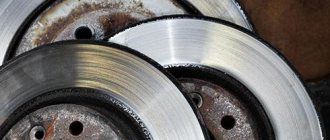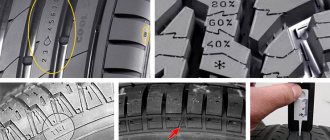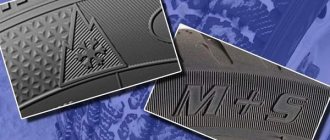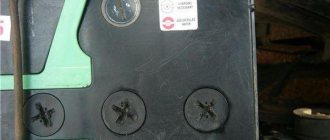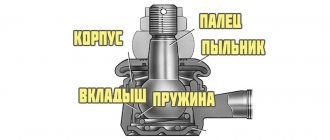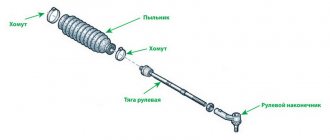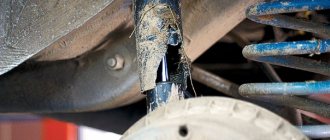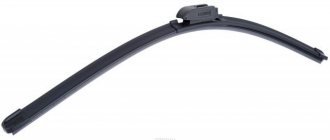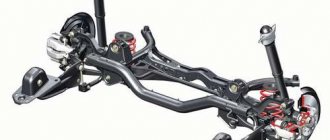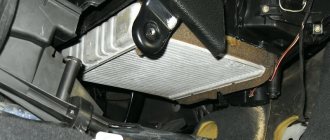How often do you check your tire wear? After all, your safety on the road largely depends on the condition of the tires: maneuverability, grip on the road surface, cornering and driving on a snow-covered road or water are directly related to this. That is why in this article we will try to consider in detail how to check and find out the real wear of the tire tread.
Pattern erase index
In accordance with global norms and standards, each certified rubber manufacturer is required to apply special marks to their products. Initially, these rules were valid only in the United States of America. Not so long ago, European companies that sought to enter the American market began to apply such markings. These standards have been implemented throughout the world.
Treadwear - the permissible wear of the tire tread . The indicator indicates wear to a critical level when a wheel replacement is required. It is a two- or three-digit number printed on the side next to the name of the standard. The base option is an index of 100 units. It means that the product can be operated without problems for 48 thousand kilometers. The higher the number, the greater the distance you can drive on this tire. The strongest is considered to be the one with a coefficient of 340 and above.
How to check tire tread wear
By knowing what type of tread you are working with, you can more easily check its depth and determine if it meets legal tread depth requirements. There are several ways to check tread depth.
You can do this with a tire depth gauge, a small and cheap gadget available at every automotive store. A coin is also a popular tool often used to check the depth of your tire. If, when you insert a 20-kopeck coin into the tread groove, you cannot see the rim surrounding the coin, your tread is deep enough and the tire is safe to use.
To get a visual idea, you can also look at the tread wear indicators, or wear bars, which are evenly spaced across the main grooves of the tire's tread. If the tread is level, your tire is worn out.
Whatever method you choose to check tread wear, be sure to perform the check in many different locations around each tire. This is extremely important as it tells you how much tread is left on the wear bar in certain areas of the tire, helping you spot any potential signs of uneven tire wear.
What is allowable wear
This indicator is a clearly verified norm, which is enshrined in the Traffic Rules of the Russian Federation. Drivers whose wheels do not meet these standards are strictly prohibited from operating the vehicle.
In our country, as well as throughout the Eurasian Union, there is a regulation obliging drivers to change tires depending on the time of year. According to it, all motorists must replace them with winter tires no later than December 1, and on February 28 (29) with summer tires. That is why the requirements for the condition of tires for summer and winter are significantly different.
So, the tread depth, which will allow the car to stay confident on slippery and snowy roads, should be at least 4 millimeters. This option guarantees safe movement at sub-zero temperatures.
As for the requirements for permissible tire tread wear in warm seasons, they are slightly lower. For comfortable and safe travel, a minimum of 1.6 millimeters will be sufficient. But if you need to go off the asphalt road, it is better to have a deeper pattern so that the car behaves confidently.
Causes of premature wear
The tread is the only part of the tire that is in constant contact with the surface. This is the area that allows the car to accelerate and confidently maintain traction. It’s not for nothing that experienced drivers say that the most important things in a car are the brakes and wheels. In some cases, tire wear may occur a little earlier than planned. For what reasons could this happen?
- Incorrect pressure inside the chamber. If the wheel is damaged, or there are microcracks somewhere in it, then the air gradually leaves the wheel. As a result, the pressure decreases and the tire begins to wear out more. Also, this very reason can become a trigger for uneven wear.
- Lack of systematic maintenance. If the car owner rarely appears at the service station, does not check the pressure level and does not monitor the seasonality, then the tires will also become unusable very quickly. If you drive on winter tires in the summer, they will lose all their studs and wear out after just a few hundred kilometers.
- The car is serviced by unscrupulous workers. At some service stations, wheels are installed incorrectly, without following the technique for mounting and dismantling tires. As a result, the wheel alignment angle turns out to be incorrect, the car begins to “throw”, and an uneven load is placed on the wheels.
- Wheels are not balanced. When replacing tires, do not neglect balancing, because this service can extend their service life.
- A sporty driving format with sharp acceleration and frequent braking has a detrimental effect on the tread.
- If a motorist often drives on broken roads or does not comply with the speed limits of the tire manufacturer, then most likely they will have to be replaced much earlier than usual.
The dangers of driving on worn tires
The norms described above were enshrined in law for good reason. Before they were approved, hundreds of tests were carried out, after which they determined which wheels would be most effective in certain conditions.
If you find yourself on worn-out studded tires in the middle of a snowy road, then when you brake hard, your vehicle will continue to move forward at the same speed. In addition, in such extreme situations, the likelihood of skidding increases several times.
The same applies to riding in warm weather. If you drive on dry asphalt, the car’s grip on the road surface drops several times when the tire tread pattern is severely worn (the remainder is less than 1.6 millimeters). The braking distance increases, and you can easily get into an uncontrolled skid when turning the steering wheel sharply. This situation is especially dangerous on a slippery road, when the grip on the surface is extremely low - you can easily lose control and fly off the road when driving even through a shallow puddle.
Tread pattern of a winter car tire
Groups into which car tires are divided depending on the type of tread pattern:
- summer, or road, incompatible with slippery surfaces and deep snow (the pattern is longitudinally directed, with narrow grooves);
- all-season (they are also universal), but in fact - inter-season (the pattern is formed by equal-sized checkers of the same shape);
- winter (complex patterns, made of more sparse elements) - on a dry, flat road they quickly wear out, make noise, and waste excess fuel;
- all-terrain, or all-terrain (an intricate pattern of isolated elements of complex shape - lugs - and wide cross grooves).
The pattern of a winter tire can be directional. As a rule, its central zone resembles a Christmas tree. Such a tire does not care which way it rotates. It can be installed only on one side of the car: right or left. A hint is the arrow on the side of the product.
This pattern - arrows (or ticks), diverging at the ends from the central axis to the periphery, quickly removes liquid from the area of contact of the tire with the road (forward and to the sides), and “pulls” the car well on a slippery surface, in the snow.
The asymmetrical winter tread pattern is “assembled” from several longitudinal patterns of different types. (For example, a path made of elements resembling arrows - for stability during acceleration and braking on ice).
The tire tread pattern should not differ between wheels of the same axle. Otherwise, the vehicle’s movement along a given trajectory is impossible, and its operation is prohibited by law. (The pattern on a pair of front wheels may differ from the pattern on a pair of rear wheels, but you will have to carry two spare tires with you - one for each pair).
The pattern of each stripe is designed taking into account its place on the tread. Therefore, a tire with an asymmetric tread has an “outside” side and an “inside” side. And since such a “composite” pattern usually has at least one track with a directional pattern, such tires are divided into left and right, and are placed only on one of the two sides of the car.
Types of tire wear
Experts distinguish two categories of wear: natural and resulting from improper use.
The first occurs over time, upon reaching the maximum mileage. In this situation, abrasion occurs evenly over the entire surface.
In the second case, abrasion occurs due to improper operation or some kind of malfunction of the car. To find out how to determine the degree of tire wear by external signs and what negative factor influenced this, it is enough to find the place where the tread is rubbing.
Normal Wear
To determine this indicator, experts take measurements in three places of the wheel: 4 times at the edges and 4 times in the center. If the depth of the pattern is approximately the same, then it has worn out due to time or high mileage.
Central and bilateral
This kind of abrasion happens when a car owner does not comply with the air pressure standards inside the wheels. If your tires are overinflated, the contact patch with the road surface is reduced and the load falls entirely on the central part of the pattern. The same uneven abrasion occurs if the car owner has not inflated the tires - then it comes into contact with the asphalt only through the side protectors. To prevent this from happening, you need to carefully monitor this indicator. After all, each car has its own requirements for tire pressure. Read them before turning on the compressor.
Spot and circumferential wear
Many drivers neglect an important procedure - balancing. Experienced auto mechanics warn: the absence of “weights” on the rims can negatively affect the safety of the vehicle as a whole and increase the percentage of tire wear along the tread height.
Abrasion is easy to notice with the naked eye - it appears in the form of spots randomly located on the entire surface of the rubber. The cause could also be a faulty suspension. To fix the problem, visit a specialized service station, diagnose the chassis and, if necessary, fix the problem.
Emergency braking is also a common culprit in this situation. When you need to stop urgently, the driver sharply presses the brake. The wheels lock, and the part of the tire that comes into contact with the road surface at the moment of stopping is noticeably worn out.
Sawtooth wear
This species is less common than others. Abrasion is most often seen in trucks equipped with block tread. Such changes in the pattern occur evenly over the entire surface as a result of the natural movement of the car - the blocks are pressed inside the wheel and no longer return to their original position. This entails a reduction in the vehicle's maneuverability by 10-20% and unpleasant noise.
Scaly wear
Another type of erasing, which is typical only for large-tonnage machines. Due to the load, there is a possibility of cracks forming on the inside of the tires. Therefore, experts recommend regularly inspecting these areas for similar defects. The cause of flakes is regular overloading of tractors. Such manifestations significantly reduce the service life of the rubber and increase the likelihood of puncture while driving.
Formation of sharp edges on one side of the front wheel
Deformations that directly depend on the driver’s driving style. Sharp acceleration and braking, rapid turns of the steering wheel - all this affects the condition of the tires. High temperatures arising from friction against asphalt destroy the structure from the inside and cause delamination. Edges can also form as a result of driving on a bad road. For example, gravel surfaces cause cracks, scratches and punctures.
Wear-Drawing
Typical for trucks. Drag occurs on the rear axles, where a pair of wheels are installed on each side for greater load capacity. Due to excessive loads, one tire seems to collide with the other, and the upper side of the outer wheel wears out. Such damage is fraught with its premature failure. Dragging contributes to the formation of extraneous noise that hurts the ear, especially when the speed of the heavy truck exceeds 80 kilometers per hour.
It can also be caused by incorrectly selected discs, too high or very low tire pressure. In addition, unbalance, due to which the weight of the vehicle will be unevenly distributed, can have a significant impact on the wear limit of the tire tread in the form of dragging.
Our production
Longitudinal comb
Mainly found on block type designs. Deformations occur on the drive axle due to improper steering. Sharp braking and acceleration, sharp turns of the steering wheel - such thoughtless maneuvers can lead to the formation of tears, cracks and grooves. This is especially true for cars with low-profile tires.
Which tire tread is unsuitable for use?
- Uneven tire wear. In situations where the wheels are not balanced or the tires were mounted incorrectly, then a violation of the pattern is observed. As a result, the tire tread, its permissible height, wears out in different areas, forming “bald spots” either in the center or closer to the sidewalls of the rubber. In this state, the “treadmill” of the tire loses its functionality, and you can no longer count on a reliable and short braking distance, or safe maneuverability of the car, especially at high speeds, when moving on difficult sections of the road, with unevenness and obstacles along the route.
Uneven tire wear
Another reason for uneven tire wear is aggressive driving with frequent emergency braking, and regularly and thoughtlessly pressing the gas pedal to the limit. The tire will suffer from sudden starts and braking. As a result, you will get very rapid tire wear and damage, and this forces car owners to make unexpected financial expenses on restoring the tire tread with their own hands or under the guidance and supervision of specialists.
If the inspector pays attention to a damaged tire, then he assesses the degree of uneven wear of its pattern, taking into account several areas, understands the extent of their damage, sums up the area and issues a resolution - whether the tire is suitable for use and whether the driver is violating traffic rules.
- Triggering of the wear indicator on the tire. Many tire models have a color or digital wear indicator, and if the pattern gradually wears out, then eventually the last scale will appear, which will mark the last day of use of the rubber. It is designed so that the indicator is set to the permissible minimum depth of the tire sipes; as soon as it appears, the product should be taken out of service.
Triggering of the tire wear indicator
If a car with an “overdue” tire wear indicator is stopped by an inspector, the driver of the vehicle will be fined in the amount of 500 rubles. Let us note that in 2017 they plan to increase the punishment rate by 4 times. The reason for the punishment is clear to everyone - it is not permissible to use a “bald” tire tread; the traffic rules interpret the driver’s behavior as threatening the safety of all road users.
- Local tire damage. Cuts, punctures of tires, their swelling, deformation, which negatively affect the cord, are not allowed; as a result, peeling of tread sections may occur. Knowing such dangerous consequences, inspectors can pay attention to cars where the tire tread and permissible height have already exhausted themselves and do not meet the standards.
Local tire damage - The disks are in poor condition. The “Technical Regulations on the Safety of Wheeled Vehicles” provides information on the requirements for tire rims. Firstly, the absence of at least one fastening on the disks and rims of the wheels is not allowed. Secondly, cracks should not be allowed on wheel parts, because even the presence of welding marks on cracks that appear is not allowed. It is believed that such deficiencies negatively affect the integrity of the product, and do-it-yourself tire retreading will be required immediately.
The inspector has the right to reprimand the driver if he notices the poor condition of the tires, especially in winter.
- Different tire models. The “Technical Regulations on the Safety of Wheeled Vehicles” clearly states that it is prohibited to install tires on the same axle of a vehicle if they are of different sizes. It is prohibited to violate the design of the product: they must be either tube or tubeless. Also, only the same tire tread is allowed; traffic regulations do not allow different patterns.
How to tell if a tire is worn out or not
If you do not use your car to drive long distances, then on average, high-quality tires can last you about 6-7 years. But some car enthusiasts, in order to save money, extend the operation for 10 years. Branded models will withstand this period without problems, but cheaper products can be seriously deformed, which will negatively affect safety. Therefore, it is very important to know how to determine the degree of tire wear based on the tread.
What does a worn tire look like?
The easiest way to determine the degree of abrasion is by visual inspection. To do this, modern manufacturers install special markers inside the grooves, the height of which is 1.6 millimeters. If you notice that the indicators are starting to wear out, you need to replace the wheels.
Profile depth measurement
The most popular method is to determine the tire tread wear depth. You can use both professional equipment and improvised means.
The first include special instruments, with the help of which all the necessary measurements are quickly and easily made. Visually, they resemble a caliper reduced several times.
Manual methods include using a ruler or using a regular coin. The easiest way: place a two-ruble coin in the groove, the head of the eagle should be at the bottom. If the tread covers the image up to your neck, the wheels are fine and you can continue to use them. If the situation is reversed, you need to install new ones as soon as possible.
Digital indexes on the tread
Now on some tire models you can see embossed numbers - “8”, “6”, “4” and “2”. They have different degrees of depth: 8 is the least, and 2 is the greatest. If after a certain period of time you see that the figure eight begins to be erased, it’s okay. But if the deuce becomes difficult to see, you already need to buy new wheels, because the residual wear of the tire tread in this case will be very small.
Handy methods
Any thin stick or wire is suitable for measurements. The measurement process is as follows:
- Use a pencil to mark the object at 1.6 millimeters.
- Place it in the groove and make sure that the height of the pattern is above the mark. In such a situation, the wheels can be used. If the mark is not visible, we advise you to replace it as soon as possible.
Popular goods
At what wear should you change tires?
Before installing last year's seasonal tires, it is necessary to determine the wear of the tires and make sure that they are suitable for use.
On summer tires, the average tread depth is 8 mm, and if the remaining depth is 1.6 millimeters, then the tire should be changed. After all, the ability to grip the road with such a product does not meet the standards.
It is easy to determine the wear of studded winter tires. For this type of rubber the value is 10 mm. Once the depth drops below 4 millimeters, professionals advise replacing the tire.
Each vehicle owner has his own driving style. Many factors influence tire wear. There are rules, the neglect of which is dangerous, as the risks of becoming involved in an accident and receiving a large fine increase.
As a “folk” way to check the degree of wear in our latitudes, they take a two-ruble coin, inserting it upside down with the eagle’s head for this purpose. If you can see the top of the bird’s head on the surface, then such a tire can continue to be used.
Uneven tire wear: how to determine, reasons, dangers
There are quite a few reasons for this. Among natural factors:
- temperature changes;
- uneven roads;
- sharp maneuvers in dense city traffic.
Erased spots can also appear due to improper use of the car:
- heavily inflated or, conversely, underinflated wheels;
- problems with the suspension and chassis system;
- improper disk balancing;
- transport overload;
- Constantly exceeding the maximum permissible speed limit.
Many drivers neglect to drive calmly, but this is a serious mistake. Indeed, with uneven or severe abrasion, the contact point between the rubber and the road surface sharply decreases. This is especially noticeable on a slippery road - the vehicle becomes worse to control, the braking distance increases, and the likelihood of skidding increases. To avoid this, it is necessary to ensure that the maximum wear of tire tread rubber does not exceed permissible norms and standards.
What is a protector
The tire tread is the working surface of any wheel that comes into contact with the road while driving. It is logical to assume that with active use of a tire, this element gradually wears out, thereby reducing the efficiency of rubber operation.
Sometimes by “tread” they mean a whole network of grooves and channels, but from the technical side such a judgment is fundamentally erroneous; on some models they are completely absent. In fact, this is a full-fledged layer of rubber with grooves and channels.
It was originally intended to protect the inside of the tire from punctures and damage, but later it was also used to form an optimal tire contact patch. Each tread has a special pattern, direction, thickness and even the quality of the raw material - these characteristics help determine the seasonality of the tire (summer and winter), the specifics of the road surface (with or without directionality) and the type of vehicle (passenger car, SUV, agricultural) .
How to calculate the degree of erasure
To determine the percentage of tire wear, there is a table for different types of rubber.
| Speed | Tire tread height | ||
| 8 mm (new tire) | 4 mm (average wear) | 1.6 mm (worn tire) | |
| 5 km/h | 100% | 100% | 100% |
| 75 km/h | 74% | 58% | 16% |
| 125 km/h | 47% | 11% | 6% |
To obtain more accurate results, experts recommend using the following formula:
Z=(Amax-B)/(Amax-Amin) * 100%, where
- Amax is the initial depth of the pattern.
- Amin is the minimum permissible tire tread wear for a given model.
- B - obtained measurements.
- Z - degree of wear in %.
